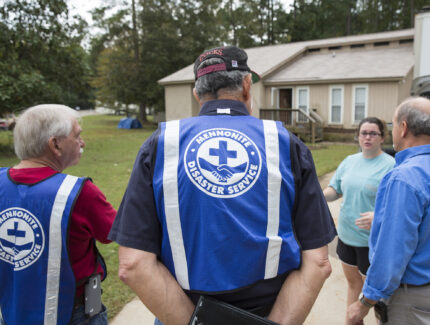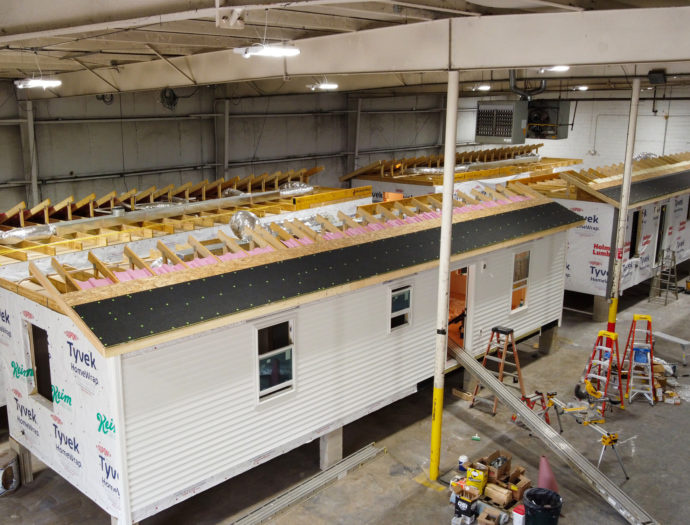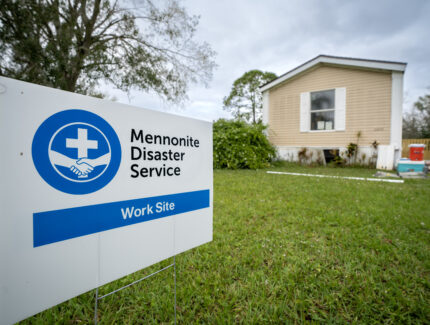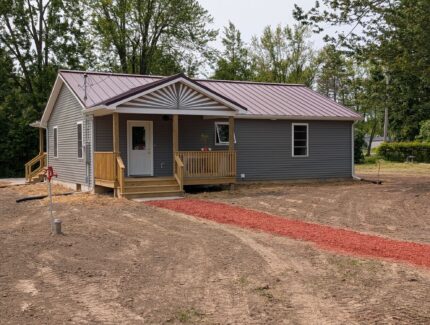


June 16, 2020
Creative MDS response will send a flood survivor home after four years of waiting
There’s a job card is on its way to Strasburg, Ohio, signed by a flood survivor from West Virginia, about to give the official “go-ahead” for a creative MDS response that will occur safely even amid the coronavirus pandemic.
That’s a tall order these days, and it took the collaboration of two MDS regions, the West Virginia Voluntary Organizations Active in Disaster (VOAD), and two Ohio-based companies, Keim Lumber and ProVia.
The project planning goes back to pre-COVID days when Keim Lumber expressed an interest in sponsoring a local MDS volunteer effort.
“Plans were underway in October 2019 to build two prefab homes in two days in the parking lot of Keim Lumber,” explained Maurice Stutzman, secretary-treasurer for MDS Region 2. “Keim was also ready to sponsor a community running race to raise funds, a race that would have happened now—in June 2020.”
But then came COVID-19. Time to rethink the plans. By switching from prefab to modular—and from two homes to one—MDS volunteers could build a home with much fewer volunteers.
The challenge with modular building, Stutzman said, is that volunteers have to build the home indoors, due to the insulation and wiring. Keim Lumber, though ready and willing to contribute funds, just did not have the indoor space available.
Stutzman remembers thinking, back in May: “We can still do this. We just have to find a warehouse.”
“We can do things when we put our minds to it, can’t we?”
— Rodney Burkholder
Enter ProVia, which leased a 30,000-square-foot warehouse in Strasburg but had moved out for the rest of the year. In a warehouse that size, a small group of volunteers can socially distance while they work.
Then Stutzman connected with Rodney Burkholder, who for years has been organizing flood response for MDS Region 1. Burkholder, who also sits at the West Virginia VOAD table, knew of a flood survivor from Clendenin, West Virginia, who needed a home after waiting four years.
With support from Keim, the warehouse from ProVia, funding from the West Virginia VOAD, and a series of phone calls, Stutzman and Burkholder realized the house could be built.
But how would they truck a modular home the 192 miles from Strasburg to Clendenin? Burkholder called a local contractor in West Virginia, who had previously helped MDS. “My purpose for the call was to quiz him about what we were facing, about how we were going to get this house transported,” Burkholder said. “He said, ‘I have the equipment, I have a license, and I’m listening.’ This person is a team player and he realized what MDS does.”
When the home arrives at Clendenin, it can be finished on site with less than 10 volunteers working.
Stutzman and Burkholder, who estimate work will actually start in the Ohio warehouse on July 1, are both wondering if this is a model that could work for other regions. This is a good test, they agreed.
“Some of our answers have yet to be determined. But there might be a feasibility here over the long-term,” said Burkholder. “We can do things when we put our minds to it, can’t we?”





